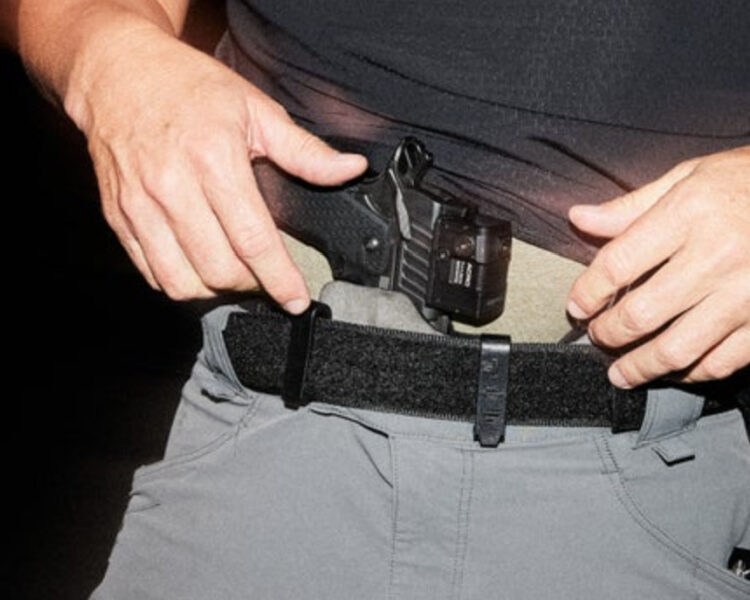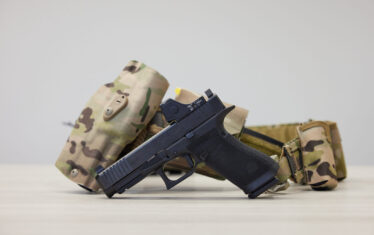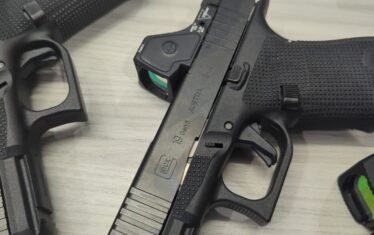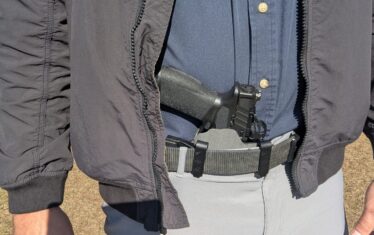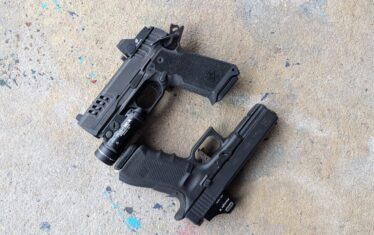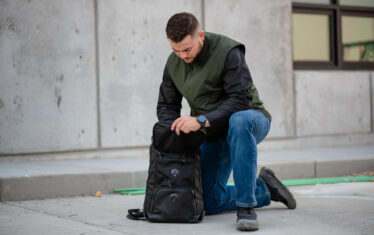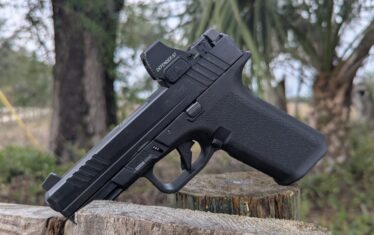Off-duty carry is something most law enforcement personnel are encouraged to do by their agencies. It is even required by some, which is a shift compared to years ago when it was more common for police to “leave the job at the door” when they were off duty.
I even remember some seminars where the speaker encouraged police not to carry while off-duty. At the time, there was a movement to encourage police to abandon all job-related tasks while off duty. This was a way to reduce stress in the officer’s life. But that was a different time.
Today, members of law enforcement see the need to carry a firearm even while off duty. This isn’t limited to the police, either. The number of citizens choosing to carry firearms for protection appears to be increasing as time goes on.
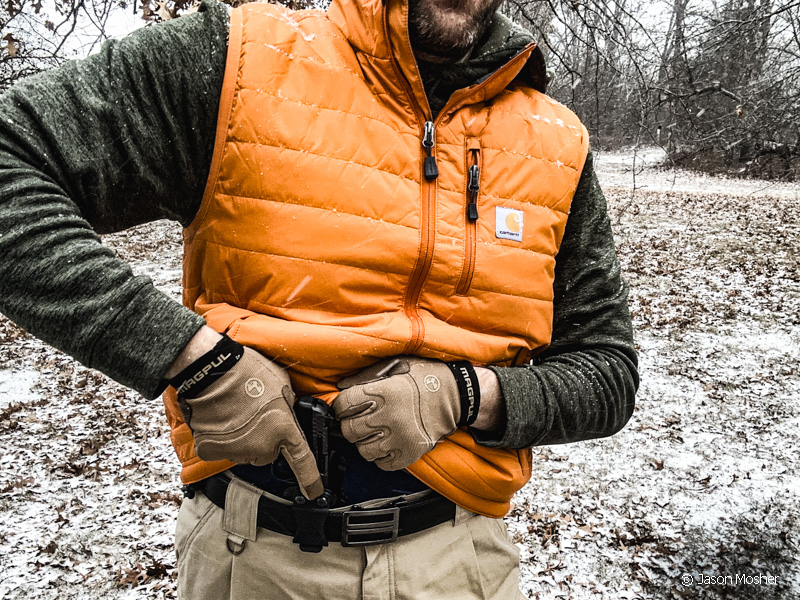
I’ll admit, I used to run errands in town without grabbing my off-duty firearm. When I’m just running to the local grocery store, it can be a hassle to put on right?
My perspective changed, however, when an angry person came pounding on my door because of an arrest my agency made. Luckily, all it took was a stern warning not to come to my home again with such matters. But what if this had gone a different way? Would I have been ready? It could have easily happened at the store or anywhere else away from my home, as well.
Over the years, I have unfortunately realized it’s best to always have a firearm on you. If you are a law enforcement officer, this extends to your community and the oath you made to protect others.
Why Carry Concealed When Off Duty?
Most agencies make it optional to carry a firearm when off duty. Nearly all of them also require the firearm to be concealed if the officers are off-duty and in plain clothes.
I’ve run across a few cops over the years that open carry. What they choose is up to them, but I will give my opinion on why it’s important to carry concealed when off duty.
The most obvious reason is attracting attention. The idea of open carry sounds great to some, but it can cause some safety issues.
On duty, you wear a vest and carry a radio, handcuffs, a Taser, and other equipment. This equipment is designed to help you deal with situations you are responding to. You are supposed to stand out and be noticed.
When you’re off-duty, however, standing out and attracting attention during an incident is not going to help anyone.
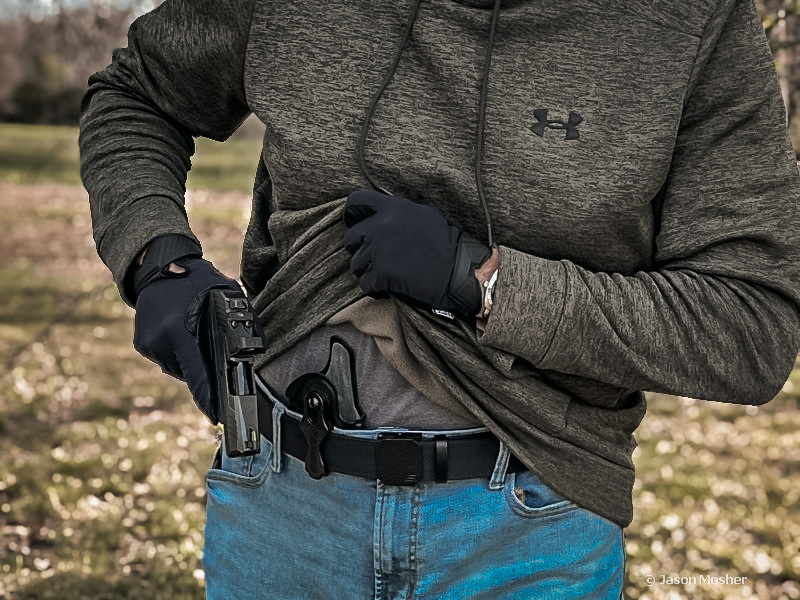
The element of surprise is important when carrying off-duty. You don’t have all that equipment and gear to help you do your job. Why let a criminal know you have a gun while walking through the mall?
In a potential conflict, an openly visible firearm will make you a target and it gives the other guy the advantage.
When you carry a concealed firearm, your response is just as fast but no one else knows you are armed. This minimizes the risk of being targeted during an incident until you decide you need to respond.
So, let’s talk about some holster options for carrying concealed while off-duty.
Holster Options: What Works Best?
Back in the day, the equivalent of carrying concealed was to wear your “back-up” gun. Often carried on an ankle, the backup gun was just that, a backup to the officer’s primary sidearm.
It was worn on the ankle because there were not a lot of other options to carry a second gun. With a duty belt full of tools and a vest under your uniform, an ankle was the ideal place.
But because this was the common way to carry it, police would also carry the same gun on the ankle when off duty. Some still do this and there’s nothing wrong with it, but we have many more options today than even a decade ago.
The world of concealed-carry firearms and holsters has rapidly evolved and now we have plenty of holster options for carrying a concealed firearm.
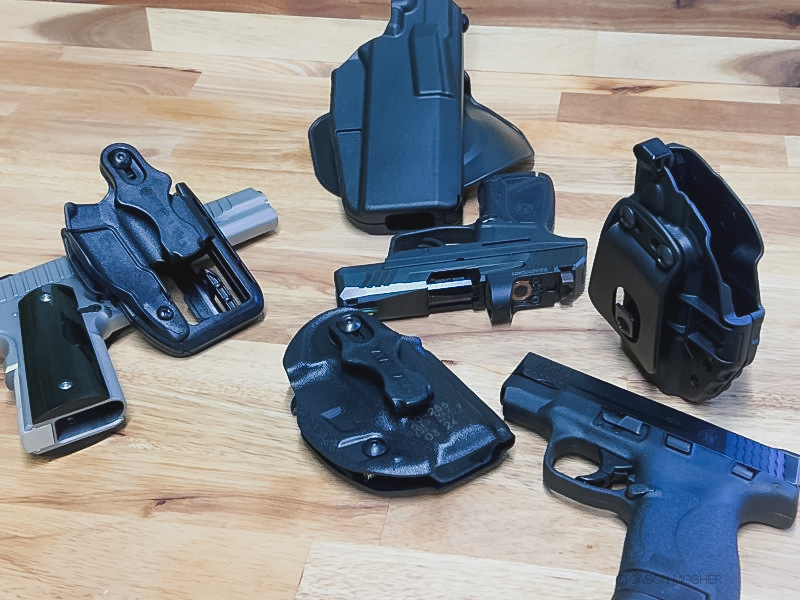
This includes inside-the-waistband (IWB) holsters, outside-the-waistband (OWB), shoulder holsters, and yes, some still choose to carry with an ankle holster.
The type of concealment holster you choose depends on the type of clothes you wear, the season, and individual preference.
I like to carry a larger handgun in the winter because I can use an OWB concealment holster. During the summer, I switch to a smaller handgun with an IWB holster for side or appendix carry.
While there are lots of great holsters out there, today, we will be looking at my favorite options for carrying concealed when off duty.
Outside the waistband concealment holsters
There is a misconception that all concealment holsters must be inside the waistband. Although OWB holsters are typically more comfortable, they may be harder to conceal and are often bulkier than IWB options. That said, some OWB holsters are designed specifically for concealed carry, with slim profiles and minimalistic designs that allow for a closer fit to the body.

One of my favorites for OWB concealment is the Safariland ALS Concealment Paddle/Belt Loop holster. You can get this holster to fit multiple guns using their holster finder. I use the 7TS concealment holster for my 1911 and M&P Shield.
If you like leather, check out the Bianchi Model 82 pancake holster. It has a locking system with an index finger release, and it works great for keeping the gun close to your side.
Again, OWB concealment holsters are for those days when you can wear something to cover them up. A jacket, coat, loose shirt, or some type of additional clothing is needed.
Inside the waistband holsters
As I mentioned above, a wave of IWB holsters hit the market over the past few years. This is because of the massive number of compact handguns that have been churned out for years.
I am thrilled to have so many options for compact handguns and accompanying holsters. Safariland produces multiple lines of IWB holsters for concealed carrying. Among my favorite for off-duty carry are the Species and Schema series holsters. Both holsters are made to fit a large variety of handguns, which is nice. It’s not hard to find one for your off-duty carry.
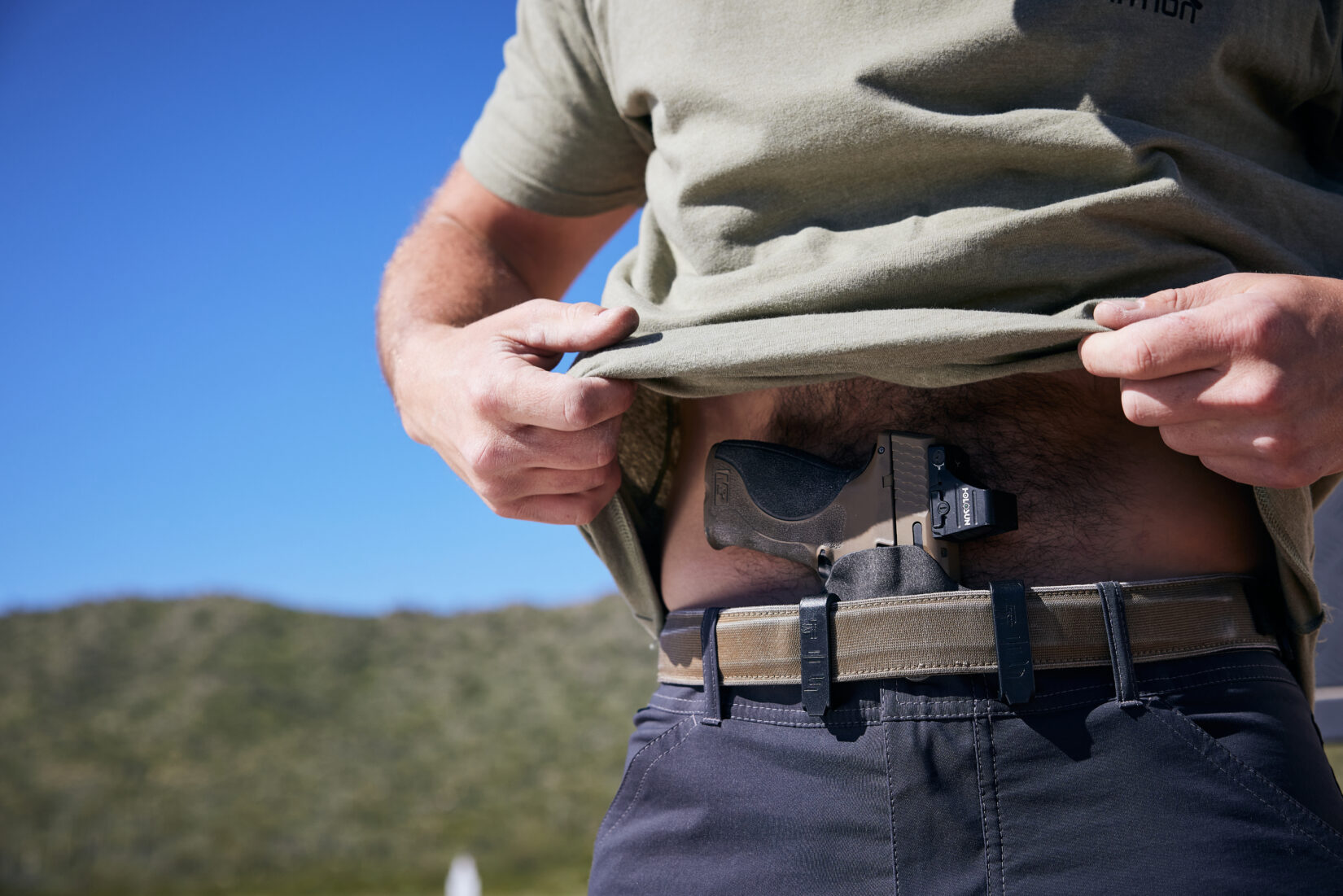
Over the years, I’ve started to like appendix carry more than strong side carry and both of these holsters are excellent for it. Both are compatible with red dots for those who like to use one. I have red dots on some of my compact handguns and with others I like to keep things simple.
Other types of carry
Shoulder holsters present a more “old school” and unconventional choice. But they work well in cooler weather when layers or jackets provide natural cover.
While these holsters offer excellent accessibility, especially when seated, they require a specific type of clothing to stay concealed. Shoulder holsters also require a good amount of practice to ensure that the draw is smooth and that firearm safety is maintained.
I wear shoulder holsters from time to time because I like them. But they are not as convenient and accessible as a good IWB holster.
Ankle holsters, though starting to be less common, offer another discreet carry option, especially for a backup firearm. Again, they are useful if an officer is already carrying a primary weapon on their belt. But they are not my personal favorite for a primary off-duty weapon.
Do You Train for Off-Duty Incidents?
Carrying off-duty is only effective if officers are prepared to use their off-duty setup under stress. Training with off-duty gear is just as important as training with on-duty gear.
The difference in clothing alone can affect how well you can reach and draw your firearm. Training on the range with everyday clothing rather than standard “range” gear is important and often overlooked.
Range drills should focus on simulating realistic off-duty scenarios. This includes drawing from the concealed holster, engaging targets under time constraints, and practicing retention techniques. All of these could differ from those used on duty.
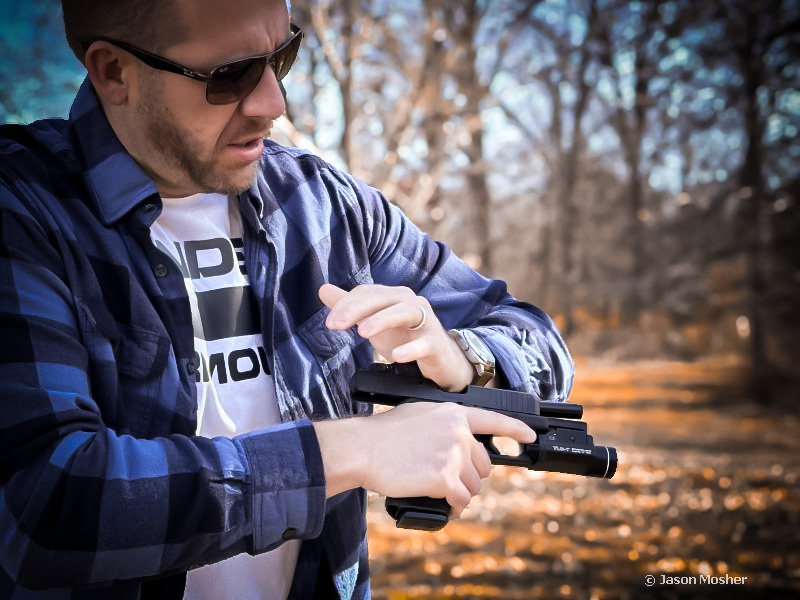
Officers should also practice drills with situational awareness in mind. It’s important to train for incidents in a more casual environment, which is not what we’re used to.
It’s also important to account for different shooting positions. Off-duty situations may require drawing from a seated position, navigating around cover, or even using unconventional shooting stances.
Our duty holsters are easy to access because they are right there on the hip. When you switch from that to a smaller handgun with a holster inside the waist, everything changes. Clothing must be pulled out of the way to draw the gun. And unlike a duty holster, the gun is not sitting away from your body for easier access.
What type is best for you?
Ultimately, the best off-duty holster comes down to individual needs and lifestyle. While some officers may find IWB holsters ideal, others might prefer OWB holsters with a larger gun. Each type of holster alters the comfort, accessibility, and clothing choices you may have.
The goal is to select a holster that provides a balance between security, accessibility, and discretion. This allows you to carry off-duty without hindrance. The idea is to keep that gun concealed and secure, but ready to draw when an incident unfolds.





